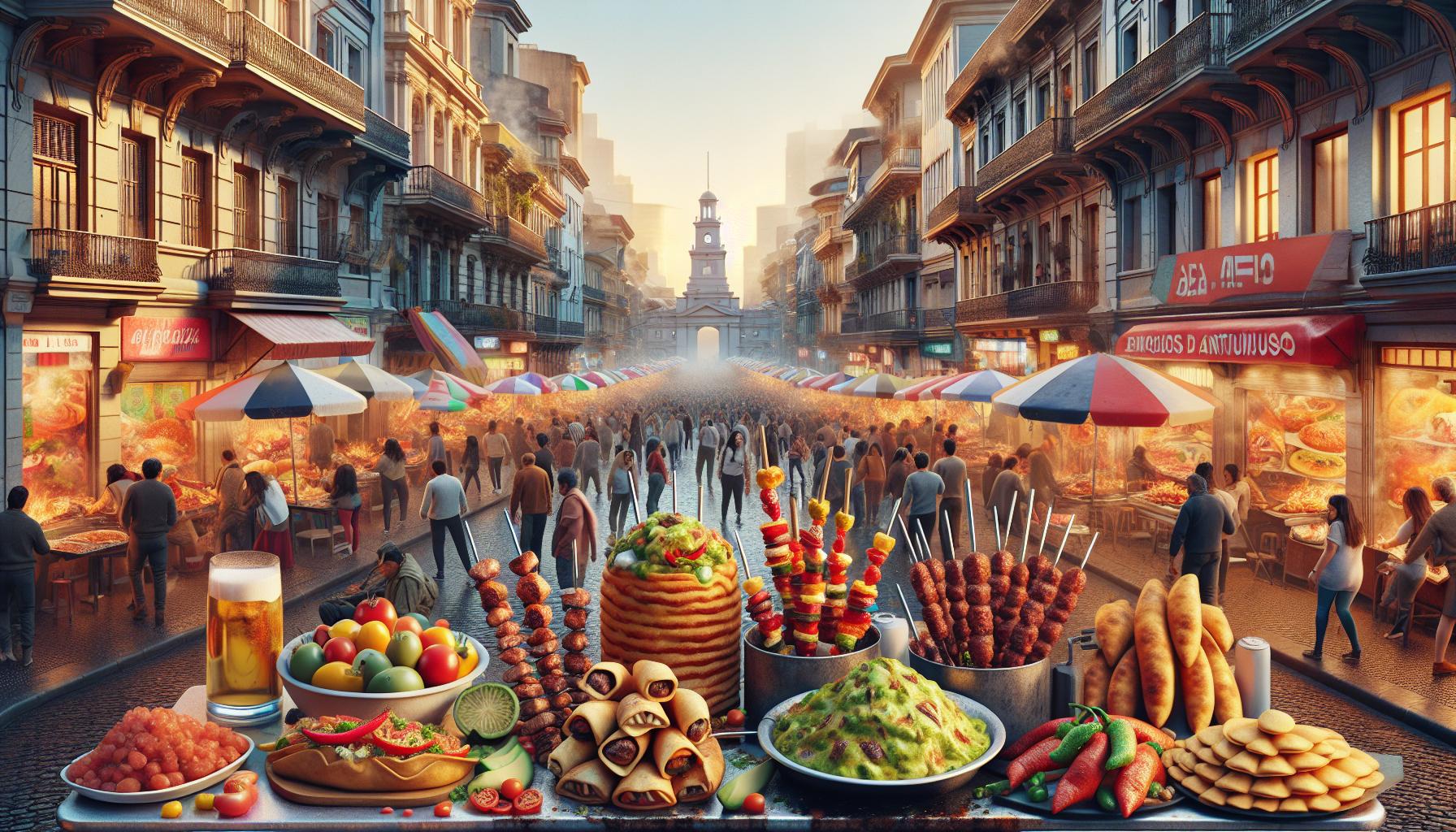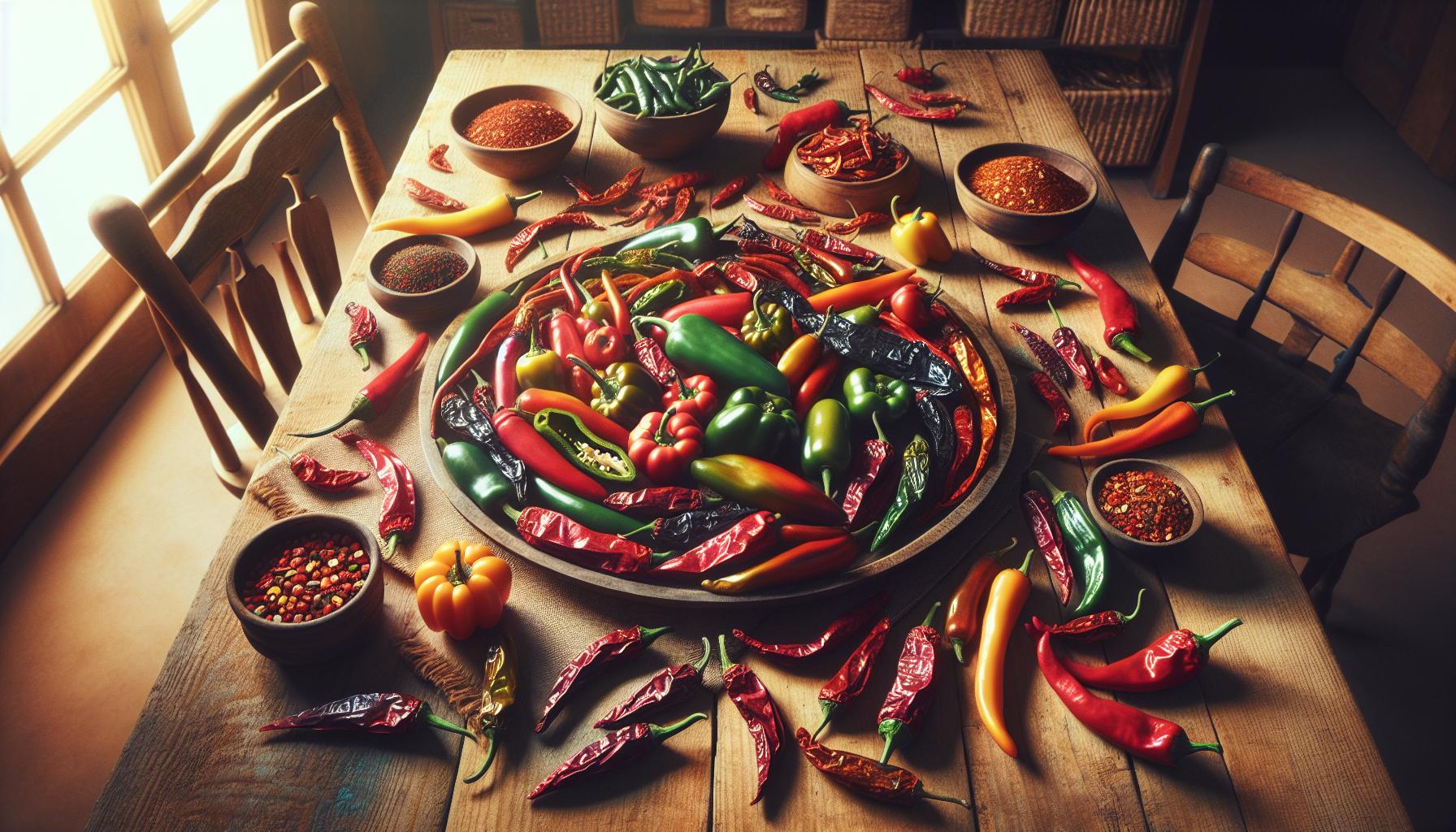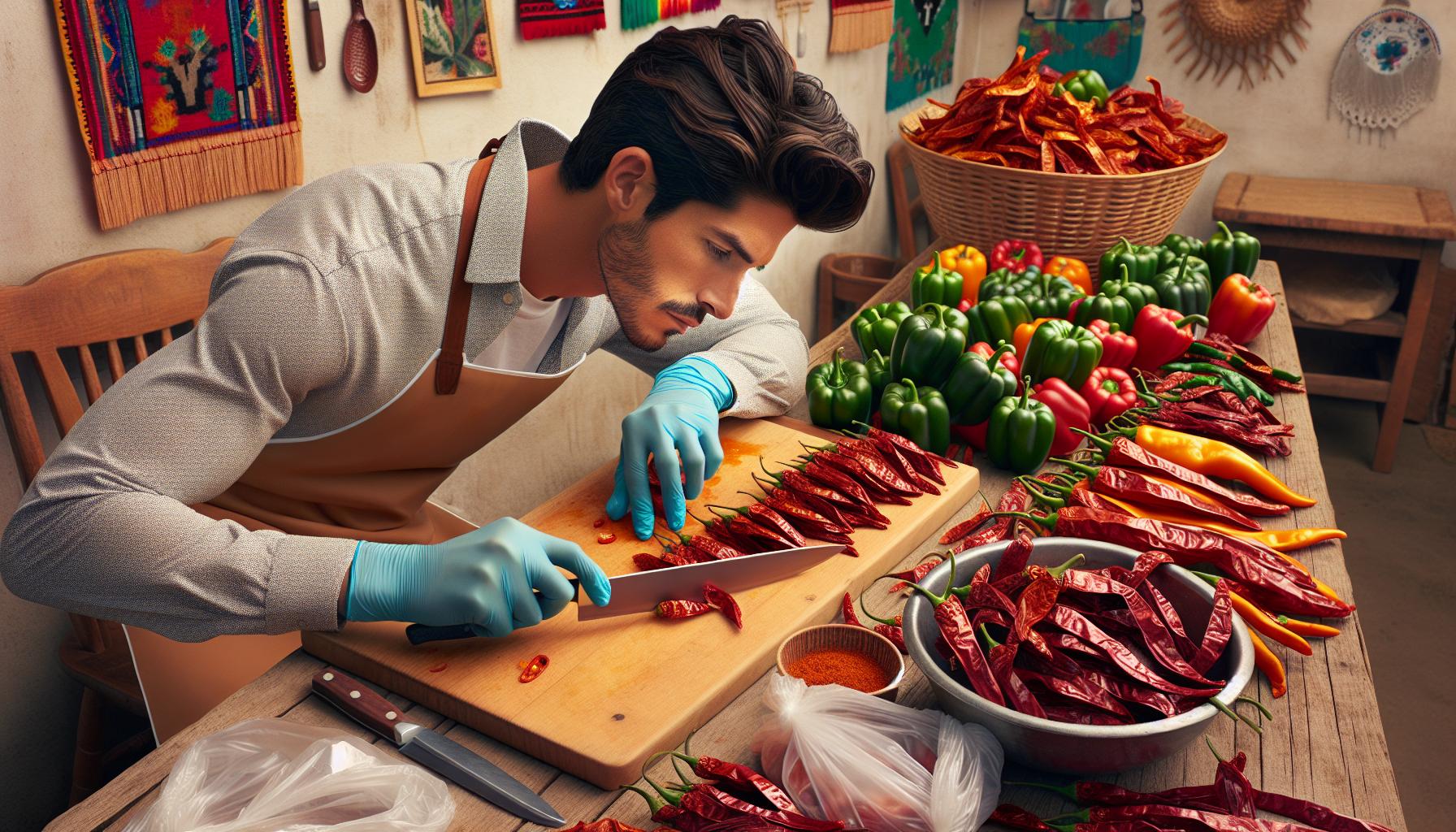From fiery jalapeños to smoky chipotles, Chilean cuisine packs a flavorful punch that’s impossible to resist. This South American culinary treasure trove combines indigenous Mapuche traditions with European influences, creating a unique food culture that’s as diverse as its landscape.
Chilean food isn’t just about throwing hot peppers into every dish – it’s an art form that’s been perfected over centuries. The country’s distinctive geographical features, stretching from the Atacama Desert to the icy peaks of Patagonia, have shaped a remarkable variety of ingredients and cooking methods. Whether it’s the seafood-rich coastline or the fertile Central Valley’s abundant produce, Chile’s gastronomy tells a story of tradition, innovation and incredible taste.
Chile Culture Food
Chile peppers transcend their role as mere ingredients, serving as cultural symbols that unite communities through shared culinary traditions. Their influence extends beyond taste, shaping social customs dietary practices across diverse societies.
Ancient Origins and Traditional Uses
Archaeological evidence dates chile pepper cultivation to 7500 BCE in Mexico’s Tehuacán Valley. Ancient Mesoamerican civilizations integrated chiles into their daily rituals medicine ceremonies. The Aztecs created complex classification systems for different chile varieties, categorizing them based on heat levels flavor profiles medicinal properties. Indigenous peoples used chiles as currency, religious offerings preservation methods for meat fish. The Mayans incorporated chile peppers into burial rituals, placing them alongside departed souls to provide sustenance in the afterlife.
Role in Mexican and Latin American Identity
Chile peppers form the cornerstone of Mexican Latin American gastronomy, appearing in signature dishes from mole poblano to ceviche. These peppers distinguish regional cooking styles, with each area maintaining its preferred varieties preparation methods. Local markets showcase countless chile varieties, from mild poblanos to intense habaneros, reflecting the agricultural heritage of different communities. Street food vendors merchants pass down generations of knowledge about chile selection preparation. The annual chile festivals throughout Latin America celebrate this cultural legacy, bringing together communities through cooking competitions harvest celebrations.
Popular Chilean Dishes and Recipes

Chilean cuisine features diverse dishes that reflect the country’s geography, cultural heritage and available ingredients. Each region contributes unique flavors to the national culinary identity.
Traditional Stews and Soups
Cazuela stands as Chile’s quintessential comfort food, combining tender meat, corn, potatoes and pumpkin in a hearty broth. The coastal regions serve Chupe de Mariscos, a creamy seafood stew incorporating fresh shellfish, milk and cheese. Porotos Granados emerges as a summer favorite, blending fresh corn, beans and butternut squash into a thick vegetarian stew. Ajiaco, another traditional soup, combines three types of potatoes with meat, corn and Chilean spices. These stews showcase the transformation of simple ingredients into complex flavor profiles through slow-cooking methods.
Street Food Favorites
Completos dominate Chilean street food culture, featuring hot dogs topped with avocado, mayonnaise and diced tomatoes. Empanadas de Pino grace street corners nationwide, stuffed with seasoned ground beef, onions, olives and hard-boiled eggs. Sopaipillas appear during rainy seasons, offering fried pumpkin dough served with pebre sauce. Anticuchos attract crowds at street festivals, presenting grilled meat skewers marinated in Chilean spices. Local food carts serve Choripán, a crusty roll filled with grilled chorizo sausage and chimichurri sauce. These street foods embody Chilean culinary creativity while maintaining affordability and accessibility.
Regional Chile Varieties and Heat Levels

Chile peppers vary significantly across regions, offering distinct flavor profiles and heat intensities that enhance different culinary applications. Local growing conditions influence the characteristics of each variety, creating unique taste experiences.
Fresh and Dried Chile Types
Fresh chile varieties include:
- Jalapeños: Medium-heat green peppers ideal for salsas salads
- Poblanos: Mild dark green peppers perfect for stuffing dishes
- Serranos: Bright green slender peppers with intense heat
- Habaneros: Small orange peppers with extreme heat levels
- Thai Chiles: Tiny red peppers common in Asian cuisine
Dried chile varieties include:
- Ancho: Dried poblanos with sweet raisin notes
- Guajillo: Smooth burgundy peppers with mild heat
- Chipotle: Smoked dried jalapeños with earthy flavor
- Cascabel: Small round peppers with nutty undertones
- Chile de Arbol: Bright red slender peppers with sharp heat
The Scoville Scale Explained
The Scoville Heat Unit (SHU) scale measures chile pepper heat intensity through capsaicin concentration. Common measurements include:
| Chile Variety | Scoville Heat Units |
|---|---|
| Bell Pepper | 0 SHU |
| Jalapeño | 2,500-8,000 SHU |
| Serrano | 10,000-25,000 SHU |
| Habanero | 100,000-350,000 SHU |
| Ghost Pepper | 855,000-1,041,427 SHU |
Scientists determine SHU ratings through liquid chromatography tests. Heat perception varies among individuals based on genetic factors physiological response. Professional chile tasters evaluate samples to confirm heat levels maintain quality standards.
Preparing and Cooking With Chiles

Mastering chile preparation techniques transforms ordinary dishes into flavorful culinary experiences. The proper handling methods enhance both safety and flavor extraction during cooking.
Essential Kitchen Techniques
Removing seeds and membranes stands as the first critical step in chile preparation. Here’s how to handle chiles effectively:
- Toast dried chiles on a comal or skillet for 15-20 seconds per side to release oils
- Rehydrate toasted chiles in hot water for 30 minutes until soft
- Blend soaked chiles with cooking liquid to create smooth pastes
- Roast fresh chiles under a broiler or over open flame until skin blisters
- Steam roasted chiles in a covered bowl for 10 minutes to ease skin removal
- Dice fresh chiles using a sharp knife on a clean cutting board
- Store prepared chiles in airtight containers in the refrigerator for up to 5 days
- Wear disposable gloves when cutting fresh chiles
- Use protective eyewear to prevent chile oil splashes
- Avoid touching face eyes or sensitive areas while handling chiles
- Clean all surfaces thoroughly after chile preparation
- Ventilate kitchen spaces during roasting or toasting
- Keep dairy products nearby to neutralize capsaicin burns
- Wash hands with soap multiple times after handling chiles
- Store prepared chiles separately from other ingredients
- Label chile containers clearly with variety heat level
Modern Chile Cuisine and Global Influence
Chilean cuisine continues to evolve through global culinary exchanges while maintaining its cultural roots. International chefs incorporate Chilean ingredients into innovative dishes creating a dynamic fusion of flavors traditions.
Fusion Dishes and Contemporary Applications
Modern Chilean restaurants blend traditional ingredients with international cooking techniques creating distinctive fusion dishes. Quinoa bowls combine ancient grains with Asian-inspired sauces seared proteins. Local chefs transform classic empanadas using French pastry techniques Korean-style fillings. Fine dining establishments feature deconstructed versions of cazuela incorporating molecular gastronomy elements. Food trucks offer Chilean-Mexican fusion tacos topped with pebre salsa merkén spice. Contemporary interpretations of traditional dishes embrace global ingredients like wasabi-infused Chilean sea bass ceviche Italian-style pasta with Chilean mushrooms.
Chile Products and Condiments
Chilean condiment producers export specialized chile-based products to international markets. Merkén, a smoked chile pepper seasoning, appears in gourmet stores worldwide enhancing various cuisines. Commercial manufacturers package traditional Chilean hot sauces using sustainable practices modern preservation techniques. Popular products include:
- Ají Cristal paste for spreading on sandwiches
- Cacho de Cabra chile flakes for seasoning soups stews
- Green Chile sauce blended with herbs olive oil
- Rocoto pepper paste mixed with citrus flavors
- Dried Chile Guajillo powder for marinades rubs
Leading Chilean food companies develop specialty items like chile-infused honey oils preserving authentic flavors through modern processing methods.
Kknowledge to Future Generations
Chilean culinary heritage stands as a testament to the country’s diverse cultural tapestry and geographical bounty. From ancient Mapuche traditions to modern fusion creations the nation’s food culture continues to evolve while honoring its roots. Chile peppers remain at the heart of this gastronomic journey connecting past and present through their distinctive flavors and cultural significance.
Today’s Chilean cuisine demonstrates remarkable adaptability as it embraces global influences while maintaining its authentic character. This dynamic food culture shows no signs of slowing down as chefs and home cooks alike continue to innovate with traditional ingredients and techniques passing down their knowledge to future generations.

